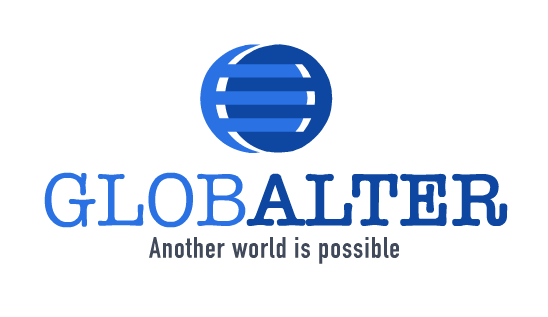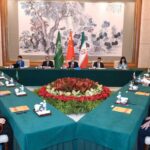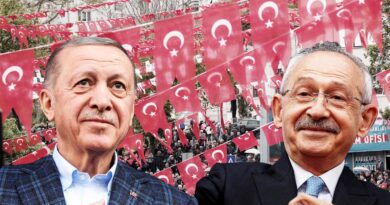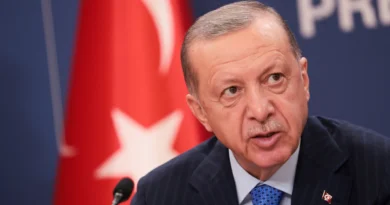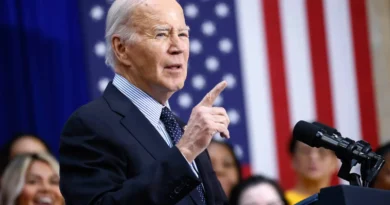Investigate to survive
JAVIER GARCIA
Few companies in the world have been as attacked from a State as the Chinese technology company Huawei has been by the US government. Blacklisted, prevented from doing business in the United States and also from importing semiconductor material with minimal US technology or components anywhere in the world. Vetoed to install their 5G networks in many countries due to pressure from Washington, unable to use Google's Android operating system on their mobile phones.
All this in the name of "national security", the new multi-purpose expression coined by Washington to twist when it suits competition on equal terms and the basic rules of the "free market" on which its entire economic system is supposedly based.
The US also promoted the arrest in Canada of Meng Whanzou, its financial director and daughter of the founder of the Chinese company, Ren Zhengfei, accusing her of violating sanctions against Iran.
It has used the same strategy with dozens of large Chinese technology companies such as ZTE, China Telecom, SMIC or biotech companies such as BGI and now plans to attack Bytedance, owner of Tiktok, another of the companies that have eaten up the ground in its own field to the great American technologies. Any Chinese company that does better than the American ones becomes a threat to national security. It doesn't matter what sector you fall into. Many voices are now calling for a ban on Shein, the Chinese textile company that has taken off in the North American market by selling clothes at an affordable price.
Huawei is the figurehead of this unprecedented attack from one state to the companies of another, something difficult to find in the annals of capitalism.
The company founded by Ren Zhengfei, which started out selling telephone switches in an apartment in Shenzhen, southern China, in 1987, experienced rapid growth from the first decade of the 2000s onwards, thanks mainly to the reinvestment of a large part of its profits in research and development.
In 2012 it surpassed Ericsson and became the largest manufacturer of telecommunications equipment in the world. In 2020 it overtook Samsung as the largest smartphone manufacturer. Its cloud computing and software business was beginning to compete with US giants IBM and Oracle. Its 5G mobile phone networks were years ahead of its competitors. Huawei was becoming the undisputed world leader in telecommunications.
AN UNPRECEDENTED ATTACK
A situation that the American "free market" could not allow. Since 2019 and with the famous excuse of "national security", Washington launched an unprecedented attack against a private company. Apart from the bans and blacklisting, the pressure on US allies not to do business with Huawei was enormous. Countless installation contracts for its 5G networks, more developed and cheaper than those of its competitors, began to be canceled in Europe, Australia, Canada, New Zealand and even in Latin American, African and Asian countries, although much of the global South continued to contracting with the company.
The results were devastating. After years of uninterrupted growth, its sales began to decline in 2019 and plummeted by nearly 30% in 2021. Its international mobile phone business plummeted a year after it became the world leader in the sector. Losses have been at least $30.000 million USD annually in this market segment since the sanctions began.
The company undertook a life-and-death struggle for survival, diversifying its offer to countless fields related to the industrial application of 5G, cloud solutions, artificial intelligence or autonomous driving. And at the same time, it significantly increased the vast resources it devoted to research.
It had already doubled its investment in Research and Development (R&D) in the past decade. In 2021, it dedicated 22.100 billion dollars to this concept, 22,4% of its income, almost double that of Amazon and Alphabet (Google) and more than triple that of Apple. Huawei allocates more resources to R&D than most of the US tech giants combined and far more than any other European company of its kind. Only Meta and Microsoft have come close to their figures.
MORE THAN HALF OF ITS EMPLOYEES ARE DEDICATED TO RESEARCH
And last year it has increased its bet even more: despite the fact that its benefits fell by 68.7%, the company allocated 25,1% of its income to research, a record investment in the last ten years and one of the largest in its history.
Huawei is owned by its workers. Its founder, Ren Zhengfei, controls 0,9% of the shares and the remaining 99% is distributed among more than half of its 200.000 workers worldwide.
This collective ownership, unprecedented in a technology company of its size, is what has allowed it to finance itself, invest a large part of its profits in research and encourage its engineers.
No one outside the company can own shares, which only employees have access to. For this reason, it is not listed on the stock market, which it exposes it less to the speculative fluctuations of the market and to the pressure of obtaining short-term dividends.
If you had investors from outside the company -domestic or foreign- they would want to maximize profits so you wouldn't be able to dedicate so many resources to research.
Collective ownership enables sustained investment in R&D in bad cycles or recessions, which is a great asset in your favor, as well as providing benefits to employees.
Despite the difficulties due to the sanctions, Huawei distributed 9.650 million dollars of dividends last year among the 131.507 workers of the company with shares. Each of them received on average more than $73.000.
As of the end of 2022, 110.000 Huawei employees, or 55,4% of its workforce, were working in research and development, the highest number in its history, both in number of people and in percentage.
It is one of the companies in the world with the largest number of patents. Last year it had 120.000 active patents and was a leader in fields such as mobile communications, short distance communications and video codecs. Hundreds of companies around the world have reached agreements with it to use its technologies.
According to the World Intellectual Property Organization (WIPO), Huawei was the company that filed the most patent applications in 2022, with more than 7.600.
About 350 million 5G phones have used its patents in the past year, as well as 45% of the world's data communications connections.
A study by the multinational consultancy Clarivet places it as the leader, by far, of essential patents related to 5G networks, ahead of the Korean Samsung and LG or the American Qualcomm.
It has 37 innovation centers and 14 research centers around the world and will open one in Shanghai next year, with an area the size of 130 soccer fields and capacity for between 30.000 and 40.000 employees.
"Huawei's true value lies in the R&D capabilities that we have accumulated through our constant long-term investment in research," Meng Wenzhou said during the presentation of the company's annual results.
CHINESE EXPENDITURE ON RESEARCH REACHES 2,55% OF GDP
Investing in research yields results: in March it was published that Huawei, together with other Chinese manufacturers, had developed the design tools necessary to create semiconductors of 14 nanometers in size and even smaller.
At the end of April, the company announced that it had succeeded in developing new software entirely in-house to plan its enterprise resources and replace another using U.S. technology, which it could no longer use. "Today we are proud to announce that we have overcome that hurdle - we survived!" said Tao Jingwen, president of Quality, Business Process and IT Management.
The large Chinese semiconductor manufacturers such as SMIC or Hua Hong have redoubled their investment in recent years to be able to manufacture more and better chips. The US sanctions have been an incentive in this regard for China to take the definitive leap to achieve technological self-sufficiency.
"China's semiconductor industry is not going to stand still, it will be reborn under US sanctions and become a strong and self-sufficient industry," said Huawei's rotating president, Eric Xu, during the presentation of the annual results last March. .
Huawei is the flagship that leads the way for the rest of the sector in China, which is devoting huge resources to research in a race against time to achieve technological independence.
Chinese R&D spending grew by 10,4% in 2022 to $456 billion, representing 2,55% of GDP, one of the highest levels ever.
It has been the commitment to research that has enabled Huawei's growth and placed it ahead of its international competitors in the last decade in fields such as 5G networks. And the company wants it to be so now, when technological self-sufficiency has become a matter of survival.
Xu summed up the company's resilience in a Chinese proverbial image: "Huawei is like the plum blossom, which tends to grow sweeter the harsher the winter frosts."
Javier García is a journalist. He has been head of correspondents in the Middle and Far East, Latin America, Europe and Africa, as well as a special envoy to different war conflicts. Currently, he is a professor of Journalism at Renmin University in Beijing. His last book is China, threat or hope.
